WMG News
Charging ahead with battery research
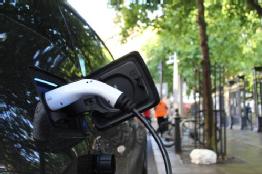 WMG has been named as a partner in five key battery research projects funded by the Faraday Institution.
WMG has been named as a partner in five key battery research projects funded by the Faraday Institution.
The Faraday Institution has committed £22.6m to battery research projects involving a consortium of universities around the UK.
Research will progress over the next two years to 31 March 2023. The projects, involving WMG, are:
· SOLBAT. The solid-state battery (SSB) is one of the most important challenges in battery R&D. As well as increasing energy density, lifetime and transforming safety, SSBs will enable step changes in the safety, driving range and longevity of electric vehicles. Read more here: SOLBAT – Solid state metal anode batteries – The Faraday Institution
· SafeBatt – the science of battery safety. Safety control and countermeasures are built into the design of today's Li-ion batteries (LiB) systems, but this adds complexity, cost and weight. As the use of LiBs expands further into automotive, stationary storage, aerospace and other sectors, there is a need to decrease the risk associated with battery usage further and to enable the simplification of safety systems. This can only be achieved through enhanced understanding of the “science of battery safety.” Read more here: SafeBatt – Science of Battery Safety – The Faraday Institution
· Battery Degradation. Although mass manufacture has made lithium-ion batteries cheaper, cost and durability remain obstacles to the widespread adoption of battery electrical vehicles. The lifetime of the batteries falls well below the consumer expectation for long-term applications such as transport. The automotive industry wants to better understand the causes and mechanisms of degradation to enable improved control and prediction of the state of health of battery systems. Read more here: Battery Degradation – The Faraday Institution
· Multi-scale modelling. The performance and lifetime of a battery depends on how the cells are combined into a pack large enough to power an electric vehicle (EV), an aeroplane or even an electricity grid. The mechanism controlling the local environment of each cell within that pack also influences lifetime and performance. The first challenges to be tackled include fast charging of batteries, low temperature operation and thermal management of cells within battery packs. Read more here: Multi-scale Modelling – The Faraday Institution
· Nextrode Electrode Manufacturing. Nextrode focuses principally on manufacturing research into how to engineer a new generation of battery electrode structures. Novel developments in electrode structuring will be drawn from basic science understanding of the current slurry casting manufacture of Li-ion electrodes along with predictive modelling to suggest how control of electrode microstructure can deliver improved energy storage characteristics. Nextrode will support UK manufacturers and supply chain companies, draw on cutting edge scientific and technological knowledge to produce increased cell performance, add value in electrode processing, and improve safety and sustainability. Read more here: Nextrode – electrode manufacturing – The Faraday Institution
Meet the team and read more about WMG’s Energy research here.
New report tackles key issues for transport electrification
WMG has provided battery expertise and knowledge for a new report examining the UK Chemical Supply Chain for Battery Manufacture.
The report was launched last night with over 40 senior figures from across the Chemical, Battery and Automotive sectors along with Government officials in attendance.
The report, produced by E4 Tech, provides an in-depth assessment of the current capability to support the growth of a UK Battery Manufacturing Industry.
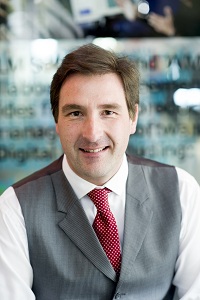 David Greenwood, Professor of Advanced Propulsion Systems at WMG explained: “Automotive batteries will halve in cost, double in energy density and see tenfold increases in manufacturing volumes before the end of the next decade. To do this we need advanced materials supplied in bulk and at very high quality. High value opportunities exist in cathode powders, anode powders, electrolytes, collector foils and separators, and the supply chain to provide them is in its infancy.”
David Greenwood, Professor of Advanced Propulsion Systems at WMG explained: “Automotive batteries will halve in cost, double in energy density and see tenfold increases in manufacturing volumes before the end of the next decade. To do this we need advanced materials supplied in bulk and at very high quality. High value opportunities exist in cathode powders, anode powders, electrolytes, collector foils and separators, and the supply chain to provide them is in its infancy.”
Key findings
It is no secret that the UK ambition of the UK Government is to stimulate the supply chain so that the UK can attract a ‘Giga-factory’. This report engaged with those members of the supply chain who would support new production capacity.
Currently three fifths of a vehicle battery pack’s value is chemicals and materials. The report has found that the UK could capture a £4.8bn/year share of this by 2030. This is down to the strong foundation of UK-based companies already embedded within many global battery supply chains.
Through strategic Government support and collaboration between our Automotive and Chemical sector there is a real opportunity to expand these existing capabilities growing capacity to serve UK-built batteries as well as significant growth in exports, especially as EU battery production grows.
For battery cell manufacturing to be economically viable there is a need for local suppliers of many materials. However, the expectation is that battery chemistry will evolve over the next decade, so it is fundamental that the companies involved within this supply chain are primed for innovation and manufacturing investment. An increase in capability and capacity offers further export potential.
The Government has already invested £246M through the Faraday Battery Challenge which has delivered valuable assets like there UKBIC and provided invaluable opportunities for the chemical, battery and automotive sector to work together and learn from one another. In order to realise this 4.8bn supply chain opportunity, the Government will continue to have a critical role to play in supporting the strategic investments in the UK battery and battery materials sectors, whilst also continuing to provide targeted funding for CR&D that allows the UK chemical sector to co-develop battery technologies with its customers.
The full report can be found here
First look at Coventry’s Innovative Light Rail Vehicle
Engineers and researchers at WMG, University of Warwick, are working alongside Transport Design International (TDI), based in Stratford, to develop a battery-powered, lightweight, rail-based vehicle to operate in Coventry.
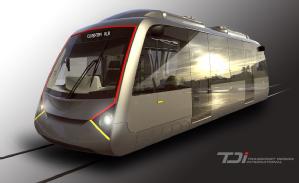 The WMG team, including engineers Darren Hughes and Andrew McGordon, are using their automotive engineering and battery expertise to assist TDI with the design of the vehicle for Coventry City Council, and now have a 3D simulation of the vehicle.
The WMG team, including engineers Darren Hughes and Andrew McGordon, are using their automotive engineering and battery expertise to assist TDI with the design of the vehicle for Coventry City Council, and now have a 3D simulation of the vehicle.
The vehicle will be battery-powered with the long term objective that it will become an autonomous vehicle, allowing more vehicles to operate intelligently and efficiently to meet passenger demand.
It will hold 50 passengers, and the longer term aim is that it will work like the London Underground system, where there is no timetable and people can hop on and off.
The vehicle will be a lightweight design using multiple materials including aluminium, steel and composites.
Due to being battery-powered there will be no overhead power supply which is both costly and has a negative impact to the city-scape. This feature provides future flexibility for operating on other non-electrified routes.
The first-of-a-kind design is available to view in 3D via WMG’s visualisation suite and the first test vehicle will be manufactured by mid-2020. TDI have partnered with Coventry-based Company RDM who will manufacture the vehicle once the design is complete.
A team of experts are also working to develop a new track system.
The Government’s Local Growth Fund through the Coventry and Warwickshire Local Enterprise Partnership (CWLEP) has contributed £2.46 million towards phase one of the research and design of the prototype and £12.2 million has been secured from the West Midlands Combined Authority (WMCA) Devolution Deal to undertake the research and development required to prove the VLR concept.
The WMCA has also allocated specialist resource from Transport for West Midlands to provide technical support, advice and guidance to the project team as the scheme develops.
Dr Darren Hughes, WMG, University of Warwick comments:
“The Coventry light-rail system will be innovative in bringing together technologies from a number of sectors to deliver a low-cost environmentally-sustainable public transport solution for the City of Coventry. Seeing the 3D simulation and envisaging how it will look within Coventry makes us look forward to building the first vehicle that will be ready for testing at a test track facility during 2020.”
 Councillor Jim O’Boyle, cabinet member for jobs and regeneration, comments:
Councillor Jim O’Boyle, cabinet member for jobs and regeneration, comments:
“Very Light rail is a fantastic innovation and it has the potential to transform the way people travel. It will be much more affordable to install than traditional trams, take up far less road space, be able to run alongside traffic and our ultimate aim is that it doesn’t require a driver so it can be a frequent service.
“Coventry has a rich traditional of vehicle manufacturing and now we are leading the way in future transport too. This Very Light Rail work, combined with our work on driverless and connected cars puts us right at the forefront of creating new, ground breaking solutions for future transport needs. They will be safer and more environmentally friendly and I hope go on to provide good job opportunities for local people too.”
Jonathan Browning, chair of the CWLEP, comments:
“Coventry and Warwickshire is at the forefront of battery technology and this exciting scheme emphasises our skills at leading the way in innovation.
“This new technology will bring more jobs and investment to Coventry and Warwickshire and it underlines the value of partnership working to boost the area’s economy.
“It is great news that the prototype of the Very Light Rail vehicle will be built ahead of Coventry being UK City of Culture in 2021 when the area’s profile will be boosted on a global stage.”
RESOLVE prototypes shape future of electric urban commuting
 The future of daily urban commuting could be small, lightweight Electric L-category Vehicles (ELVs). A cost effective, energy efficient and comfortable alternative to traditional cars in cities, is at the heart of the €6.92m RESOLVE project, which included WMG at the University of Warwick.
The future of daily urban commuting could be small, lightweight Electric L-category Vehicles (ELVs). A cost effective, energy efficient and comfortable alternative to traditional cars in cities, is at the heart of the €6.92m RESOLVE project, which included WMG at the University of Warwick.
The European project – named ‘Range of Electric Solutions for L-category Vehicles’ – designed and developed two stylish tilting four-wheeler prototype ELVs with leading European manufacturers Piaggio and KTM. These demonstrators were unveiled, and presented to representatives from the European Commission, at an event in Brussels in April 2018.
WMG was one of fourteen partners in the project, which included leading names from industry and research such as Piaggio, KTM, Bosch, Ricardo, the Austrian Institute of Technology, and the University of Florence.
WMG joins two new Faraday battery research projects: part of a £42 million UK initiative
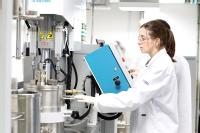 Today, Tuesday January 23rd 2018, the Faraday Institution announced up to £42 million in new government funding to four UK consortia to conduct research aimed at overcoming battery challenges to accelerate the electric vehicle revolution, and WMG at the University of Warwick will be partners in two of those four new consortia.
Today, Tuesday January 23rd 2018, the Faraday Institution announced up to £42 million in new government funding to four UK consortia to conduct research aimed at overcoming battery challenges to accelerate the electric vehicle revolution, and WMG at the University of Warwick will be partners in two of those four new consortia.
The Faraday Institution, which WMG at the University of Warwick helped to form, is the UK’s independent national battery research institute, and it was established as part of the government’s £246 million investment in battery technology through the Government’s Industrial Strategy. Its formation was announced in October 2017 by the Business Secretary Greg Clark. The research it supports at organisations such as WMG at the University of Warwick aims to put the UK on the map as being at the forefront of battery technology worldwide and radically increase the speed with which we are able to make the move to electric vehicles.
WMG researchers at the University of Warwick part of new national £65 million battery research programme
 WMG researchers, at the University of Warwick, will be a significant part of a new £65 million national battery research initiative. The Faraday Institution, a new multi-million pound research institute, was announced on Monday 2nd October 2017, by Greg Clark, Secretary of State for Business, Energy and Industrial Strategy. It will drive and accelerate fundamental research in developing battery technologies, and its translation.
WMG researchers, at the University of Warwick, will be a significant part of a new £65 million national battery research initiative. The Faraday Institution, a new multi-million pound research institute, was announced on Monday 2nd October 2017, by Greg Clark, Secretary of State for Business, Energy and Industrial Strategy. It will drive and accelerate fundamental research in developing battery technologies, and its translation.
The Faraday Institution (FI) will be the UK’s independent, national institute for energy storage research. Funded through the Engineering and Physical Sciences Research Council (EPSRC) from the government’s Industrial Strategy Challenge Fund (ISCF), the Faraday Institution is part of the coordinated activity between UKRI partners Innovate UK and EPSRC with the Advanced Propulsion Centre (APC) to meet the Faraday Battery Challenge, announced by the government in July, of delivering an integrated programme of research, innovation and the scale-up of novel battery technologies.
The UK’s leading battery researchers in academia worked closely with UK industry to assess the challenges and opportunities, and the seven university founders (Cambridge, Imperial, Newcastle, Oxford, Southampton, UCL and Warwick) proposed to charter an independent national Institution as the best way forward. The ambition of the Faraday Institution is to make the UK the go-to place for the research, development, manufacture and production of new electrical storage technologies for both the automotive and the wider relevant sectors.
DELIVER-E: revolutionary electric delivery vehicle tech prototyped by WMG
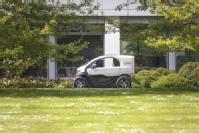 A technology demonstrator for a new type of electric delivery vehicle – which could make the courier industry greener and more efficient – has been developed by WMG at the University of Warwick and Warwickshire-based design company Astheimer Ltd.
A technology demonstrator for a new type of electric delivery vehicle – which could make the courier industry greener and more efficient – has been developed by WMG at the University of Warwick and Warwickshire-based design company Astheimer Ltd.
Based on the platform of a Renault Twizy, the DELIVER-E is a quiet, compact, lightweight electric vehicle, ideal for navigating urban environments, addressing issues like congestion, noise, pollution - and responding to the demands of an ever-growing shift to online shopping. This prototype allows cutting-edge WMG research outputs to be shown in a real, driveable vehicle.
A number of teams in WMG have worked on the project, including their SME Group who developed the original design, and with the help of one of their partners Astheimer, progressed the design from concept to prototype.
Astheimer developed the WMG concept to create a unique vehicle exterior - by enlarging its rear storage area, giving it space for three online delivery baskets. They also added new body panels to the DELIVER-E, and fitted it with programmable LED pixel strips, which can change colour for brake and indicator lights.
Inspiring budding young engineers
We were delighted to lend our support to a team of young engineers from Howes Primary School in Coventry as they embarked on the Greenpower IET Formula Goblin Project.
Earlier in the year the children entered a competition, which involved working with engineering students from the Warwick Racing team and our technicians, to build and then race an electric kit car.
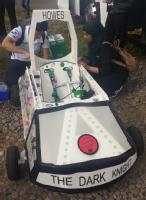 Over the past academic year the Warwick Racing team, led by Warwick Racing Outreach Manager Mankin Lee, paid regular visits to the school to help the team of seven youngsters prepare their car, which they named The Dark Knight. The children then had a chance to race against 29 other schools from across the region in a special race day in Staffordshire.
Over the past academic year the Warwick Racing team, led by Warwick Racing Outreach Manager Mankin Lee, paid regular visits to the school to help the team of seven youngsters prepare their car, which they named The Dark Knight. The children then had a chance to race against 29 other schools from across the region in a special race day in Staffordshire.
Rebecca Bollands, Deputy Head Teacher at Howes Primary said: “On behalf of Howes I would like to express our sincere thanks for giving us the opportunity to take part in the Greenpower Car Project. It is something that we have never had the opportunity to do before and it has been absolutely fantastic.
“The children have loved doing it and it has really enhanced their understanding of science and technology, in a very motivating and purposeful way. The kit car has been the talk of the school and we have it proudly positioned in our main entrance.
It will be something that our pupils will never forget and will be one of their highlights of their time at primary school. Hopefully the children involved and others will be inspired to consider jobs in engineering in the future.”
PhD researcher sought to help test huge car electrical system that will stretch from Newcastle to London
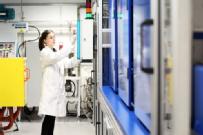 Car battery researchers at WMG at the University of Warwick have just bought specialist “Hardware-in-the-Loop” high power computing equipment. This will connect real time high tech battery research testing at the University of Warwick with simultaneous tests on real advanced hybrid electric vehicle components at five other universities. Now WMG are looking to recruit a PhD research student to run the battery test while connecting it to an England wide simultaneous test of a vehicle’s electrical systems.
Car battery researchers at WMG at the University of Warwick have just bought specialist “Hardware-in-the-Loop” high power computing equipment. This will connect real time high tech battery research testing at the University of Warwick with simultaneous tests on real advanced hybrid electric vehicle components at five other universities. Now WMG are looking to recruit a PhD research student to run the battery test while connecting it to an England wide simultaneous test of a vehicle’s electrical systems.
Ministers announce £4.25 Million funding for battery and autonomous vehicle research at WMG
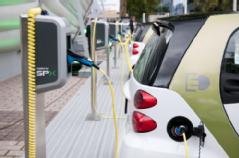 Today, Tuesday 11 April 2017, Business Secretary Greg Clark and Transport Minister John Hayes have announced a range of research funding which included a total of £4.25 million, split between a battery research project and an autonomous vehicle research project, both with input from WMG at the University of Warwick.
Today, Tuesday 11 April 2017, Business Secretary Greg Clark and Transport Minister John Hayes have announced a range of research funding which included a total of £4.25 million, split between a battery research project and an autonomous vehicle research project, both with input from WMG at the University of Warwick.
